It’s been a while since I’ve last illustrated an aircraft that kept me scratching my head in confusion the entire time, but the Comac C919 did it. Quite frankly, it’s a weird (but neat) airplane which seems to borrow a lot of design elements from other aircraft:
- The nose looks a lot like the Boeing 787
- The fuselage and engines are very A320-like
- The vertical stabilizer looks like they stole it off the 777-9 (which just so happened to be stolen off the 787)
- The winglets are short and stubby versions of what are found on the A350
- And the name? They went right ahead and borrowed “19” part from the Airbus A319.
Blank side view templates of the Comac C919
Despite the number of times I found myself giggling as I was creating these templates, I had a lot of fun drawing the Comac C919. I’m admittedly not very familiar with Chinese aircraft, so it was neat to see how they do things compared to their western counterparts.
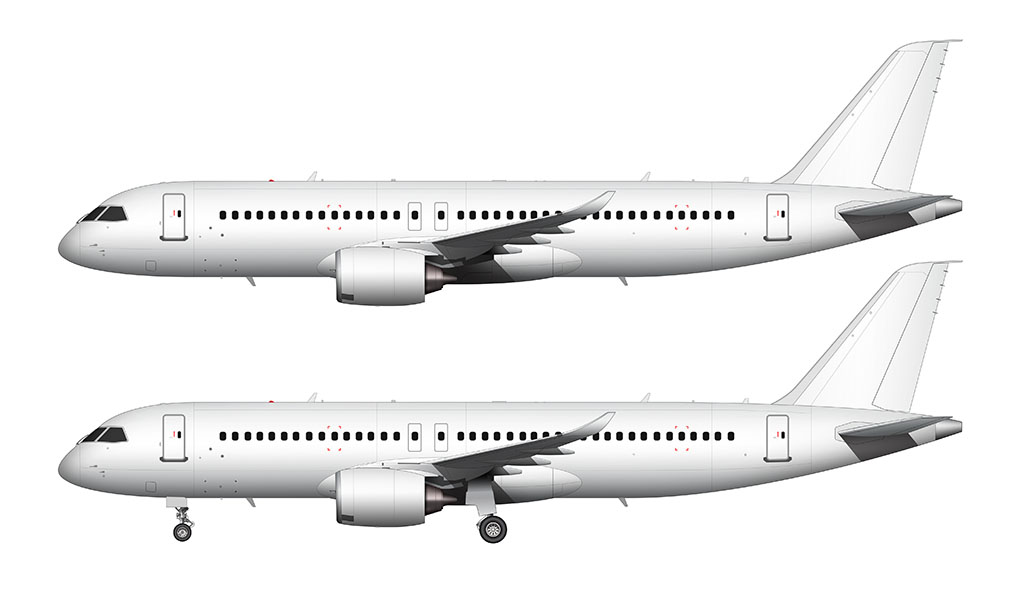
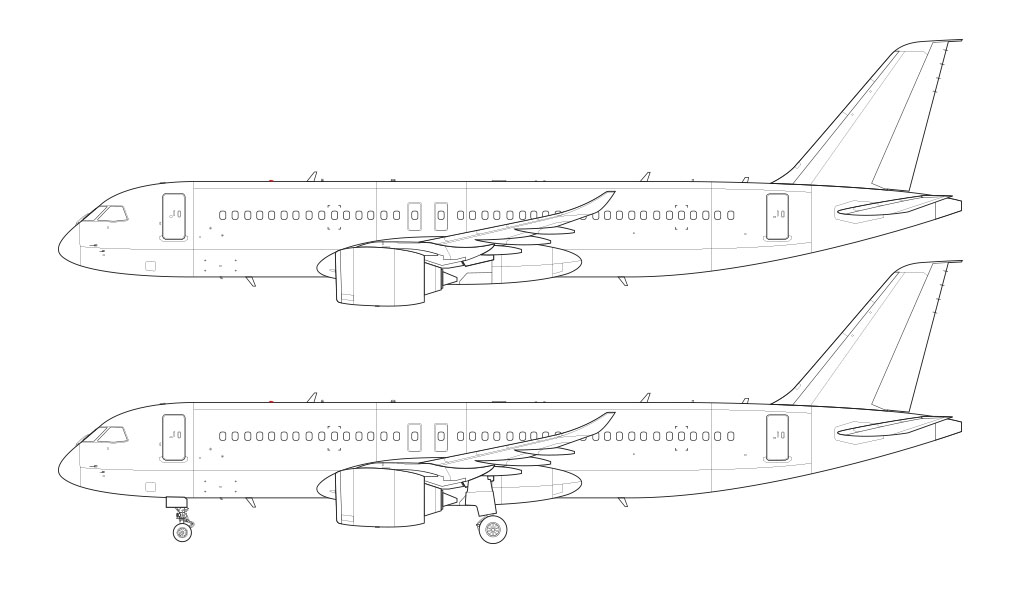

The Chinese are notorious for copying design elements of popular western products and integrating them into their own. From what I can see, it is very obvious that happened with the C919 as well. I mean, it’s just too much of a coincidence that this thing looks a bolted-together concoction of some of the most popular aircraft from Boeing and Airbus.
I’ll give them credit for being scrappy though. Why reinvent the wheel when you know that there’s stuff already out there that is proven to work? Whether or not they can be accused of outright stealing design elements is a topic of another post for sure.
What exactly is the Comac C919?
Launched in 2008 and first flown in 2017, the C919 is a Chinese twin-engine airliner built to compete with the Boeing 737 MAX and the Airbus A320neo. It has proven to be quite popular in the domestic Chinese market, with 1008 commitments and 305 firm orders by March of 2021.
As of that time, there have been no firm orders (or even commitments) by any western airline. However, GE Capital Aviation Services (a US-based leasing firm) has shown some interest by placing 15 firm orders. Time will tell where those aircraft actually end up.
An assortment of really neat facts about the C919
No matter what you think of Comac aircraft (and the C919 specifically), there are some really neat things about it that shouldn’t be overlooked:
- The ‘”C” in “C919” stands for ‘Comac’ (and not “copycat” as you may have assumed)
- Even better, the number 9 in Chinese culture is a homophobic pun meaning “forever”. Yes, it’s totally ok to pause for a moment and contemplate that before continuing.
- Ryanair actually signed on as a co-developer to the C919 program in 2011. However, that agreement ended shortly thereafter due to national security concerns (it was China that was feeling skittish – not Ryanair).
- Bombardier is a supply chain provider for the C919 program (flight training included). Which we can assume to mean that China is cool with Canadians. But not the Irish.
- There was a 5-month delay between the first and second flight test of the C919 – a pretty big deal at the time, and an indicator as to how many issues there were with the C919 Comac needed to sort out.
- In early 2020, the US government was proposing to block GE from selling engines to Comac due to national security and competition concerns. This was never enforced.
- The average sales price of a new C919 is $68.4 million
- The C919 has a range of 2,200-3,000 mi (4,100-5,600 km) – which is far short of how far the A321neo and 737-8 MAX can fly
- Passenger capacity is 156 to 168 depending on configuration
- The majority of the aircraft structure is aluminum (as opposed to being constructed of carbon composites)
What is the next Norebbo aircraft template going to be?
It’s probably going to be the Bombardier Global 7500. FYI, I’m probably going to flip back and forth between business jets and airliners going forward, as there seems to be demand for both. I live to serve, and I want to create aircraft templates that will make everyone happy (if that’s even possible).
Also, the flow of new templates should be faster than what it has been over the past two months or so. I’ve been working on an in-depth airliner art course for the past 4 weeks (details soon!), and that has taken time away from template creation. Sorry about that.

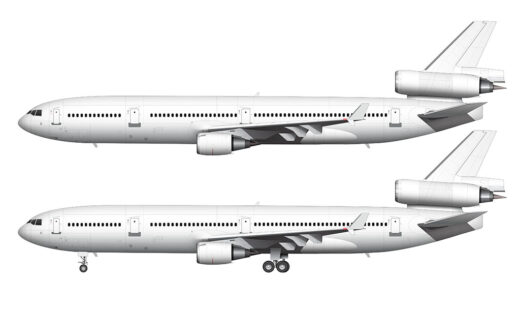
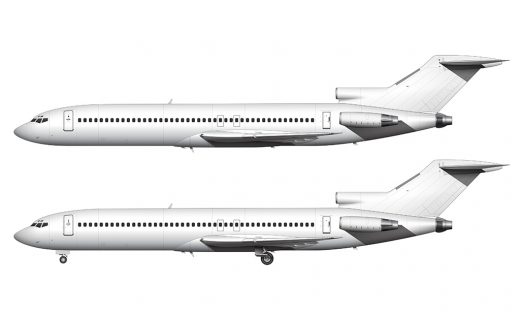
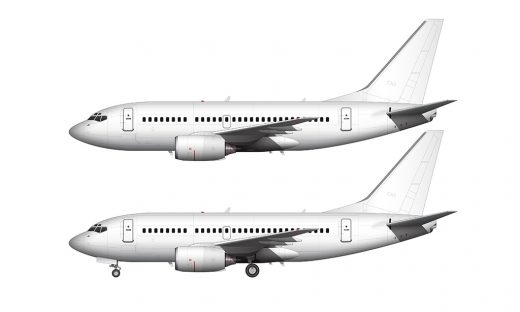
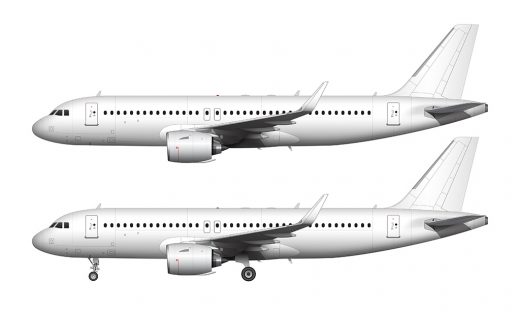
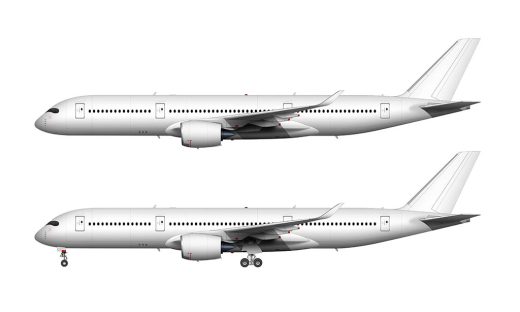
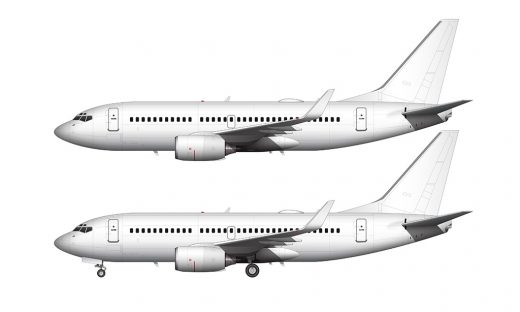
China doesn’t have much experience with developing large transport aircraft, but it’s not surprising that they have started to, and is making good progress. Perhaps the C919 might not be the most original design ever, it seems like a good start for China’s commercial aviation industry(COMAC is short for Commercial Aircraft Corporation of China, Ltd. though I think it makes more sense to just abbreviate it into “CACC” or “CAC”). But personally I think this is one of the most interesting modern planes out there(because we don’t know too much about them?), alongside the Russian MC-21 and Sukhoi Superjet. Really nice illustration as well, thanks Scott!
Thanks Alan! Yeah, for as much as I teased them about the design of the C919 in this post, I am very much looking forward to seeing what they come up with next. I’d bet anything that China is going to be a big player within the commercial aircraft industry within the next 20 years or so.
Nice illustrations as always, Scott! A side note regarding the A320-style of engines: the current engine supply contract for the C919 is actually the CFM LEAP-1C (of which the LEAP-1A variant powers the A320neo).
Good to know – thank you!
Hello, when are the templates for the irkut MC21 and the mitsubishi spacejet going to be more or less?
Which one do you want first? I usually do one template a month and I haven’t yet decided what I’m going to do in May. Let me know which one you want first and I’ll do it!
irkut MC21-300
I would like very much irkut MC21-300!!!
Ok then, I’ll try to do that one (just as long as I can find enough decent reference material).
I would never have guessed that you would do a Comac C919. I do agree with you that it is a quirky aircraft that a lot of people have no idea that exists. Great job!
Thanks! I learn so much by doing these templates. I’m very much looking forward to my next quirky aircraft…
Hello, is there any ideas when the Mitsubishi Spacejet templates will be posted? or will they be posted?
Hey Max – yes, they will be posted eventually. I haven’t done any new templates over the past six months or so (been busy on other projects), but I’m feeling the itch to roll up my sleeves and get illustrating again. I have a few other templates I need to crank out first, but the Mitsubishis are coming…
Happy to see a template of a Chinese aircraft here. I want to see more Chinese aircrafts such as Y-7, MA-60 and ARJ21-700.
They’re on my list!
I think China has already made great efforts in this regard,For a Chinese, this is exciting.For those who have achieved remarkable results in military aviation,But for China, where civil aviation is approaching degradation, this is simply a masterpiece of us (I am a Chinese). I hope the prospect of civil aviation in China will be better and better, so that people around the world can ride on safe and fast Chinese planes!
I agree – commercial aviation is getting interesting (and good!) in China. I haven’t flown on any Chinese aircraft yet, but I’m definitely looking forward to it.